Travel Guides - Detskoye Selo - 1934 Soviet Guide to Tsarskoe Selo
The text below comes from a rare English-language guidebook to Tsarskoe Selo which was published for foreign tourists. It is interesting to read how the town was described during the Stalinist era. One can see why the Communist authorities were uncomfortable with the survival of the Romanov palaces and worked to close them and sell off their treasures. Not only were the palaces popular tourist spots, but they were also reminders of the humanity of the murdered Imperial Family.It is only because of the peristant struggle of museum workers and cultured people in the Soviet Union that the palaces survived until the Second World War. Many people gave their lives to save these monuments during the Soviet period and we should never forget their sacrifice.
Bob Atchison
Every nook of Detskoye Selo breathes of the past. Each step engenders memories of old. These reminiscences are often ungracious and ugly - for great was the evil wrought by Russia's crowned despots. Their whims and pastimes were a heavy burden upon the long suffering people. The artistic elegance of the palaces of the Russian tsars can never efface the bitter pages of the old regime. Tsarskoye Selo, founded in the beginning of the XVIII centruy, was for more than twenty years a seat of the tsars. To shed lustre on the autocracy splendid palaces and parks had been created by the complaisant genius of great architects and painters and the servile labour of many thousands of peasants and workers.
The legacies of the tsars were for ever given by the October Revolution to the working masses. All that was really valuable from an artistic, scientific or educational point of view, was regarded as part of an historical museum. The wide interest it evokes is attested by the large number of excursionists and tourists who visit it.
The parks and places of Detskoye Selo, formerly the domain of a priviliged few, have become a source of education and enlightenment.
Tsarskoye Selo was renamed by the Revolution. It is now called Detskoye Selo.
An elevated situation on a level with the steeple of St. Isaac's cathedral, its proximity to the capital (32 kilometres), the abundance of verdure and drinking water long ago made the town famous as one of the healthiest spots in the vicinity. Tsarskoye Selo- pre-revolutionary residence of courtiers, a borough boasting of its perfect management which was turned by special decree of the Soviet government into a health resort for the benefit of Soviet workers- is a locality perfectly suitable for organising various establishments of medical treatment, rest and recuperation for Leningrad workers and their children. To that end all that belonged to the Romanovs which was of no interest to art or science has been adapted.
Now a health resort and climatic station, Detskoye Selo boasts of fourteen children's sanatoria and several medical prophylactic establishments as well as private "rest homes" and sanatoria for members of the Academy of Sciences and other eminent scholars, workers, and employees of the public instruction board, foreign specialists, veterans of the revolution and so on.. Here the restoration of the health of the workers is carried out on a large scale.
The metamorphosis of the Tsarskoye Selo residence of the tsars into a combinat [sic] of culture, a museum town, a town of rest and a children's settlement, is now complete. Detskoye Selo has become a link in the ring of verdure which surrounds Leningrad, the city of the proletariat.
The rise of Detskoye Selo is intimately connected with the struggle of landlord Russia for the conquest of the Baltic shores, which began in the first part of the eighteenth century. Needing a maritime outlet for its trade, Russia had to "cut a window" into Europe.
The building of suburban residences for the tsars began simultaneously with the foundation of St. Petersburg.
The old name "Selo Saarskoye" is derived from the Finnish "Saari Moith" meaning a high place; this was altered in the seventeenth century into Saar farmstead, and later rehashed for the sake of euphony as Tsarskoye Selo. The spot was chosen by Catherine I wife of Paul I. A small palace was erected on the site of the old Swedish farmstead in the space now occupied by the centre of the Bolshoi (large) palace. Later on the farm was inherited by Elisabeth, the daughter of Paul I, as her patrimony. It was surrounded with villages inhabited by peasants from the central part of Russia. Their toil in the construction of palaces and laying out of parks was cruel exploitation.
The Detskoye Selo palaces and parks are a living record of Russia's imperial period, which is demonstrated in architectural styles, parks, objets d'art and household articles.
"Give Tsarskoye Selo the fountains of Peterhof and a second Versailles is born." This opinion of the marquis of Roxhall, a well-known traveller, may seem to exaggerate, but the truth is that of all of the stately imperial palaces, the Catherine Palace is the best incarnation of the idea of a Russian Versailles. That idea, the influence of royal France on the Russian tsars' penchant for erecting palaces, was a manifestation of both the international and the internal consolidation of Russian absolutism. Louis had his Versailles and Elisabeth raised her Tsarskoye Selo where architecture, sculpture, painting and park are expressive of order, organisation and centralisation.
One word from the tsar was sufficient to cause the erection of a magnificent pile of buildings in a wilderness. The same influence, the magnificent and pompous style characteristic of French absolutism, are traceable in the interior mouldings and furniture of the palace, in almost each article of everyday life. The great work was accomplished by a number of architects and painters subject to semi-military discipline and regulations. Orders were dispatched by "generals of architecture" whose object it was to guess the will and the whim of their crowned client and to supervise the construction of palaces.
They were Rastrelli, at the time of Elisabeth, and Cameron, the famous artist of Catherine's reign. Vestiges of the strucural period before Elisabeth have been preserved only in a few details of the exterior. The former palace can only be appreciated from models and archives.
Tsarskoye Selo was selected by Elisabeth as a suburban residence. She wished to create a magnificent palace, a brilliant picture of gala receptions and festivals similar to those exhibited by foreign courts. The splendour of the palace is characteristic of the genius of Rastrelli, and it is the best example of Russian baroque. The three storey pile is some three hundred metres long and the faade eloquently demonstrates the taste of the epoch.
The rich sculptured wall ornamentation painted in azure stood out against the glistening white columns and gilt tracery. The roof covered with galvanized iron was bordered with a string of gilt tracery statues.
Seen from a distance on its open, elevated site, this palace glistened in the sun with the brilliance of a jewel. The story goes that on the completion of the palace Elisabeth invited the foreign ambassadors to admire it. They all stood enraptured at the marvel of art, making appropriate exclamations. Only the French ambassador, celebrated for his wit, had nothing to say. "Now is there anything you do not approve of?" Elisabeth asked him. "Why, yes, I think there is one big defect." "Well, what is it you miss?" "A box in which to keep the jewels" answered the courtier.
His words proved to be prophetic. By the end of Elisabeth's reign all the fanciful ornaments and statues, unsuited to the northern climate, were ruined; the gilding faded, the palace had a coat of tarnished green and the beautiful creation of Rastrelli had lost a good deal of its brilliance. But in its present appearance the palace has not lost its power of fascination.
The Leningrad Soviet has decided upon completely restoring the ornamentation and sculptures of the exterior of the palace, the aim being to re-create faithfully the artists original design. "The beautiful should be preserved, even if it is old." Why turn from the truly beautiful, why for the sole reason that it is old, reject it as a starting point for further development, why should we bow down before the new as before a deity. These words of Lenin reveal the very essence of the attitude to the creations of the old masters in our day and the main reason for restoring monuments and the Catherine palace in particular.
Created in the heyday of the absolute monarchy, the palace with all its magnificence, the sumptuousness of ornament and splendour of ceremonial, was to display before Russians and distinguished strangers the security and majesty of the tsars' supreme power. The exquisiteness of the fittings, the fineness of the work, the diversity of moulding and design, served to emphasize the stateliness of the imperial mode of living. A brilliant line of tsars, shrewd and crafty diplomats of the businessman type, court poets and fops of the aristocracy with their tastes and manners acquired in aristocratic Paris- the favorite resort of the nobles- marched past the halls and presence chambers of the palace. For a century and a half it was the centre of galas and it was frequently remodelled and improved in compliance with the fashion of the moment.
The decoration of the palace was continued on a particularly impressive scale in the eighties of the XVIII century when Tsarskoye Selo became a favourite residence of the aging Catherine II. A new architect was called in for the occasion, a Scot, Charles Cameron, who soon became the favourite artist to carry out the fancies of the empress whom the court flatterers extolled as the "Northern Semiramis". Cameron's work was of great elegance.
The whole of the southern wing of the palace, the so-called "intimate" rooms of the empress and the Cameron gallery were remodelled by him. His innovations in fact destroyed part of Rastrelli's halls, but the new style was so perfect that it is hardly to be regretted.
The light and exuberant rococco style and the refined classicism of Cameron combined in harmony to make the Catherine palace one of the masterpieces of architecture.
One is astonished by the abundance, diversity and richness of the materials applied to its decoration: Italian painting, sculpture and mosaic, numerous collections of Chinese and Japanese porcelain and lacquer work, exquisite fabrics and draperies of French workmanship. The magnificent enfilade- a long suite of halls, parlours, reception rooms and studies, a vista of doors- gives us a view down an avenue about 300 metres in length. Guests were able to see the empress approaching them through the enfilade, in the gilt framed doors beautifully carved by the serf artists.
Each room in itself gives an idea of the general character of the palace and at the same time reflect various aspects of the court life of the XVIII century. Thus, for instance, the church designed for court service rivals the hall rooms in its magnificence and frivolous decorations. Gilt fretwork ornaments, repeating the decoraton of the parlours and anterooms, the brightly coloured pictures- the icons glorifying the power of the tsars, were meant to pamper the eyes of the royal worshipers. Religious ceremonies were intimately connected with palace festivals and entertainments. From the pulpit of this church "the miscreant and antichrists" Pugatchev, was execrated in April 1774. Also, from the same pulpit, at the time of the French Revolution, Te deums for defense from "enemies and brigands of the execrable French nation of rebels" were sent up.
The extent to which the decoration of the church corresponds to that of the gala rooms can be seen from the so-called "antechambers" five spacious halls where the nobles were seated during gala receptions according to age and rank. The fitting of the anterooms harmonises with that of the big ball rooms. On approaching it the decorations of the anterooms become more and more elegant and rich. Royal deities are represented on the ceilings. "Diplomatic" tributes of the Orient to the Russian court - a collection of ancient Chinese vases- are placed upon the walls. The halls are almost devoid of furniture, this being deemed superfluous as the antechamber was intended for standing. At a sign of the master of ceremonies the courtiers entered through a side door into the throne room, a hall of supreme brilliance and magnificence.
The hall measures 72 steps in length and is lit on both sides by enourmous windows. A flood of light, a multitude of mirrors and fretwork decorations create a vivid effect. At the end of the hall stands the throne reserved for extra solemn public "appearances" of the tsar when he received the nobility and "distinguished strangers". The shackles of ceremony, the ostentation, find their best expression in this state room. The thousands of candles flickering in mirrors, the jewels and splendour of the courtiers' attire, the sumptuous train and complicated system of court ceremony were designed to exalt the person of the autocrat, the bearer of the power of the nobility. A contemporary description of a gala reception in the Catherine Palace may here be quoted:
"Distinguished guests of both sexes thronged the apartments of the palace in resplendent attire and jewels. The beauty and richness of the apartments was magnificent, but it was eclipsed by the spectacle of four hundred of the most beautiful women gorgeously dresses. Suddenly the curtains fell and there was darkness immediately followed by the light of a thousand and two hundred candles reflected in mirrors. A band of sixty musicians started up and the ball began. The first steps of the minuet were interrupted by a muffled clamour. The doors were flung open and the empress was beheld seated on a gorgeous throne. She descended and entered the big hall surrounded by a ring of brilliant courtiers."The theatrical pomp of such receptions, balls and masquerades were the chief moments in the life of autocracy based as it was on the support of the nobles. During two centuries fashions changed frequently, so did the notions of what was most fitting for a tsar's palace, but the gala character of court life remained unchanged. Indeed the more pressing were the claims of progress the more insistently the monarchy held to its external show. It was certainly not fortuitous that this ball room was occupied with gala receptions not only through the whole of the XVIII century, but up to the last years of the tsarist regime, when the last Romanovs chose it to receive with great pomp the French presidents, Faure, Loubet and Poincare, as well as William II and the King of Italy, Victor Emmanuel.
The creative genius of Rastrelli, overlaid by the remodelling of a later period, is brilliantly exemplified in the fitting up of the picture hall which was designed for the pompous reception of strangers. The hall, with its two rows of windows, faces the courtyard and the garden and extends across the entire breadth of the palace. The walls are hung with pictures separated by narrow strips of gilt panelling. The collection of paintings - the work of Dutch, Flemish, Italian, French and German masters- is arranged on a decorative principle. The play of light and shade had a decisive part accentuating as it did the daring ornamentation of the inlaid floor which was composed and executed by German artists.
A cursory inspection of the second floor impresses the visitor with the abundance and variety of the material and the manner of its display. The walls of some of the rooms are covered with silk. Others again are covered with mouldings in an infinite variety of motif. The floor is inlaid with designs of precious kinds of wood. All the ceilings are adorned with pictures or specially painted plafonds. Many handsome pieces of furniture, clocks, Chinese and Japenese pictures all serve to complete the general impression of lustre and pomp of the palace - the pearl of art created by Rastrelli, Cameron, Valeriani, Torelli, Gradizzi, Peresinotti and other noted artists.
The Amber (yatarnaya) Room deserves particular attention. It is world famous. The ornamentation was presented to Peter I by the Prussian King Frenderick in exchange for fifty-five of the tallest men to be found in Russia who were recruited for the army and sent to Frederick as his personal body-guard. The decoration carried out by the German artist A. Shluter was originally used in one of the halls of the old Winter Palace in Petersburg.
Later a fine collection of amber articles was got together in the "Amber Room" consisting of various gifts and purchases. In the XVIII century the "Amber Room" was a favourite place for evening assemblies. Here a limited circle of courtiers played cards. The empress Elisabeth, enthroned with the support of the nobility, and later on Catherine, encouraged extravagance and lavish habits. On April 21, 1765, Catherine's birthday, the ceremony of kissing hands (baisse mains) took place here "on drums and kettledrums and trumpets". The celebrated giant, whom his majesty Peter I, accompanied by many distinguished persons, condescended to examine, and whom Peter appointed to serve in his body-guard was also brought here.
The splendour of the room, a memento of the epoch of feudalism has come to us almost intact, surviving the careless and extravagant attitude to object of fine workmanship in the XVIII century.
All of the sixty-three rooms of the belle-etage (second floor) complete the general idea of the art and artistic taste of aristocratic society. The Lyons Hall, for instance, is attractive for its fineness and exquisiteness, the silk on the walls and the mother of pearl design of the floor. From the western side of the palace the enfilade of the hall debouches into the so-called Chinese hall beyond which were situated the personal apartments of Catherine II.
Chinese closets Ðan indispensable attribute of the XVIII century palaces- are a vivid testimony of the weakness for Chinese articles observable in many ensembles of the palace. The Chinese closet of Catherine II's palace is modelled on the site of the original gala flight of stairs which was destroyed at the end of the XVIII century. The closet is decorated in the Chinese and Japanese style and contains an enourmous collection of oriental articles. The relations between Russia and China began in the second half of the XVIII century. An extension of the borders of both states made them neighbors and affordedpossibilities of direct diplomatic and commercial relations. Trade conveyed by the crown's caravans put at the disposal of the court a number of Oriental articles that soon came into fashion and were employed in the adornment of the tsar's palaces. The original Chinese and Japanese panels and Canton enamels in the decoration of the walls representing scenes from Chinese life are most valuable. Amongst much original and imitation work, a striking example is the red Pekin lacquer vase adorned with exquisitely carved designs which was presented to Nicholas II by the Chinese Emperor in 1912. Three generations of skilled workmen devoted more than seventy years to fashioning it.
By the end of the XVIII century the magnificent but old fashioned residence lacking cosiness and simplicity began to pall on the Romanovs. Satiated by her diverse pleasures the ageing empress insisted upon having private apartments. These were fitted up from a design of Cameron's. The "Silver Study" is one of the most remarkable of its kind. The spaces between the mirrors were originally fitted with silver which was taken off later by order of Paul I and covered with paintings from the architect Guarengui's design. The study was the centre from which Catherine directed her home and foreign policy and it was here that reports from the Turkish war, waged in the interests of the predatory tsars and the feudal aristocracy, were received. The manifesto upon the last partition of Poland which was the climax of the predatory policy of the XVIII century autocracy was likewise signed in this room. No less interesting are Cameron's other creations, such as the bedroom and the "snuff room", the miniature size and fittings of which resemble elegant snuff-boxes. "The mirror room" is the last of Catherine's private rooms and is distinguished by its gem-like decoration and the perfect quality of the furniture.
The rooms were intended to display the enlightened European style of Catherine's life and are testimony to the development of a superficial culture among the Russian court and aristocracy, which was closely related to the ever deepening process of enslaving the peasants, increased taxation, and complete disfranchisement of the people who formed the bulk of the population in the eighteenth century.
The Catherine palace is a synthetic monument of aristocratic art. Its whole essence asserted the self assurance of the nobility and the feeling of social superiority inherent in the ruling class. The Catherine palace inspired the aristocracy with a sense of exclusiveness, fostering the feeling that they were "above ordinary mortals". The expenditure on the structure and maintenance of palaces were unlimited. The upkeep of Tsarskoye Selo residence of the Romanovs cost the toiling masses millions of rubles annually. In the years preceding the revolution the cost of maintaining palaces was equal to the whole annual budged of a small state such as Serbia. But all the splendour and magnificence that were to demonstrate the security of the monarchy did not save it from the social upheavals of the XVIII and XIX centuries or from final overthrow in 1917.
The huge structure of the Catherine palace is surrounded with large gardens which completely separate this residence of the tsars from humble mortals and forbid them entrance into it.
Like the palace, the Catherine Park is also a monument of immense work achieved by artists, craftsmen and nameless "labourers". Primarily, at the time of Peter I, it was laid out in the French style. Remodelled by Rastrelli it served to complete the picture of architectural majesty of the tsar's residence. During its history the park and buildings were subject to frequent reconstruction and considerable alterations. But time did not efface its main feature Ð the architectural harmony of the park and the remarkable edifices raised by the genius of Rastrelli and Cameron.
From the ancient, shady avenue which runs beside the palace may be gathered an immediate impression of the architecture of the park. The Cameron gallery and "crescent shaped ponds" are seen to the right. The central avenue leads to the "round hall". The way then lies straight to a glade where the light building of the Hermitage, a pavilion built in 1757, rises above the verdure of meadows. Like the Palace, the pavilion has lost some of its magnificence. Time has considerably affected its sculptural decorations. The Hermitage arose as a necessary component of the empress Elisabeth's residence. Planned after the style of French Hermitages where the king could retire from his pompous life to a narrow circle of court aristocrats, the Detskoye Selo Hermitage did not really answer the purpose of seclusion and was in fact another stage for ostentatious receptions and festivals. In the middle of the hall and in the corners were placed tables and chairs; guests wrote their orders on slates which served as plate-rests, the dishes ordered suddenly appeared by means of a contrivance designed for the purpose and set up on the ground floor.
The interior decoration of the Hermitage is one of Rastrelli's masterpieces. The Hermitage has remained almost unaltered in the course of succeeding generations.
The park is very rich in architecture and silvan effects. A number of statues, pavilions and entertainment cottages are hidden from view by the profuse growth of trees. The Cameron gallery, unique for its site, towers above the park landscape. Both it and the pavilion "Agate Rooms" which crowns the so-called "Suspended Garden" are in the classic style. A broad flight of stairs diverging into two light wings passes on to a terrace with a colonnade arranged in the form of an ancient temple. The gallery is adorned with bronze statues and busts of Greek and Roman deities, heroes, kings and philosophers. Three contemporaries of Catherine's were placed among them by the empress's command; Fox, the English secretary of State (a token of gratitude for his Russian orientation), Joseph II of Austria and the great Russian scientist and poet Lomonossov. On days of big Tsarskoye Selo festivals the long hall in the centre of the gallery was the scene of masquerades and concerts.
The gallery terrace opens upon the broad landscape of a park laid out in the English manner of the second half of the XVIII century.
The Alexander park is a natural continuation of the Catherine park. It was the custom however to distinguish them by the name of the place they surrounded. The largest part of the Alexander park was laid out in the XVIII century after the style of an English landscape. It has been subject to a number of changes during its existence. During the later periods many richly endowed buildings were added to it. Besides, numerous Chinese pavilions of the XVIII century a series of structures was erected during the XIX century in a style of sentimental romanticism after the manner of the Middle Ages. Such are the Chapelle, the Farm, the Arsenal and the White Tower. The most curious monument amongst them is the White Tower (La Maison de Chevalier). In the course of the XIX century and up to the fall of the autocracy under Nicholas II, the pavilions were used for entertainment.
The Alexander park acquired a new importance in the reign of the last Romanov, Nicholas II, who since 1894 used the Alexander palace as a temporary abode and settled there permanently in 1905. The constant apprehension for his life under which both Nicholas II and his father and grandfather lived, increased greatly in the years of the 1905 revolution. In 1905 the Alexander park was enclosed by a massive railing five kilometres long which was further guarded by three lines of soldiers both inside and outside.
Each day a general inspection of the park took place before the appearance of the tsar. A company of infantry and Cossacks secured the Alexander park, carefully examining the trees and bushes. No one, not even the grand dukes, had the right to enter the park without special permit.
The Alexander palace is striking for its architectural poise. One of the facades of the palace faces the lake. The view from the opposite bank is beautiful, the severe faade being reflected in the calm water which is bordered with green banks.
The exterior of the palace has been preserved almost intact since its construction. It was built in the classic style by the Italian architect Guarengui, at the order of Catherine II.
The palace was completed in 1796. It was intended for Catherine's favorite grandson, Alexander Pavlovitch, and his gala court life. He played an important part in the predatory plans of Catherine II, who was bent on building a world empire. It was to Alexander, and not her son Paul, that she designed to transfer the throne.
Later, the palace, the exterior of which was as ornate as the interior, was considerably remodelled for the family of Nicholas II. In one suite of rooms, however, there is still preserved the original decoration of Catherine's time. Three central halls are characteristic of the creative power of Guarengui, who constructed numerous palaces and buildings of the period. The rooms contain many interesting portraits and pictures of the XVIII and XIX centuries. The other apartments have a value at the present time only from a socio-political point of view. The rooms of Nicholas II, decorated and furnished as they are with utter lack of taste, illustrate the aesthetic decay of the last of the Romanovs. The Romanov family was attracted by the "bourgeois" simplicity of contemporary houses. This furniture completely answered the artistic demands of the tsar's family. The last Romanovs ordered the furniture from the firm of Melzer who fitted out their apartments in a horribly tasteless manner. The walls, tables, whatnots and shelves are occupied with a row of small flower vases, gay insignificant pictures, knick-knacks, commonplace lithographs. The family took a personal interest in the furnishing of the rooms.
"The Alexander palace is our nest", the tsarina Alexandra Feodrovna used to say. Entries in diaries tell us of the particular pleasure the Romanovs had in arranging all the stuff about the rooms.
Banal "modern" luxury confronts the visitor in every room. Everywhere there are souvenirs of the childhood and youth of the lady of the house who was destined to play an ominous part in the history of the dynasty. Portraits of her father, the duke of Hesse, look down upon the dull German smugness which was so dear to his heart. There are portraits of her mother, the duchess Alice, daughter of queen Victoria herself, the grandmother, of the brother, the prince of Hesse, Ernst Ludwig. There are also water-colours of the native Darmstadt. Every corner of the rooms, every unoccupied space is filled with a quantity of photographs of the numerous relatives scattered throughout Europe. The Russian tsar was kin to all the European "houses". He was a cousin of the English king, George IV, cousin of the king of Denmark, and so on, his mother, grandmother and great grandmother were native Danish, Hesse, and Wurtemberg princesses. Nicholas' wife was his first cousin.
On a background of mediocre furniture and market bagatelles, a spirit of militarism is manifest in the pictures and souvenirs. Militarism influenced the lives of all the members of the tsar's family. Daily reviews, parades and military drill were considered the best means for keeping the army on their side against the imminent threat of revolution. Nicholas II often repeated "God and the army are our supports."
The style of the furniture of the bedchamber, the most intimate of the Romanovs' rooms, is both mystic and religious. A multitude of religious objects made the bedroom look like a domestic chapel. About seven hundred icons and "holy" pictures are hung over the beds and behind the alcove. One of them represents Nicholas with his wife and son standing next to Christ. The only secular picture is a photo-portrait of general Orlov, a commander of the Uhlan life guards and a friend of the empress. At the time of the revolution of 1905 his share in the suppression of the peasant disturbances gained him the reputation of a knight and champion of the tsar's throne.
The psychology of the imperial couple had been greatly influenced by the long absence of an heir, putting the throne in a precarious position.
The vain expectation of a son found its reflection in the choice of pictures which adorn their bedroom, among which the place of honor is given to representations of the virgin and the infant and of the "Annunciation". The birth of Alexis, the son of the Romanovs, gave a new but more than ever hopeless turn to the tragedy of the succession. The child was afflicted with haemophilia, which was hereditary in the Hesse family, an uncle, brother and two nephews of Alexandra Feodrovna having died of it. Science was impotent against the disease. The hopeless malady of their son made the Romanovs turn to supernatural forces. A long string of "god's" people made their appearance at the court, beggarly devotees, hysterical women, barefoot vagabonds and decrepit monks. Grigory Rasputin, a native of Siberia, soon became the most popular of them all. The main thing which established his superiority over the rest of the hysterical crew was his power of soothing the sick child and effecting a seeming improvement in his health. A wider sphere of action was soon to open before this new born Siberian miracle worker. By the end of his activity, during the imperialist war, al the threads of administering the country were centred in the ands of this uncrowned autocrat. The Romanovs would not decide any important question without consulting Rasputin; ministerial offices, even the post of commander-in-chief of the Russian army, were filled in obedience to his instructions.
Rasputin was killed by a palace camarilla [sic] in December 1916, and there was nobody to take his place. The Romanovs were left alone to face the revolution, forsaken both by the "army" and "god".
The years 1914-1917, years of imperialist war are the last pages entered in the history of the Alexander Palace. War accompanied by embezzlement of public property, bribes, treachery, and licentiousness revealed all that was rotten in the tsar's monarchy. The first news of the February upheaval threw the royal master of the palace into helpless inactivity. The days following his abdication which the tsar signed in his royal train on March 1 were spent by him in the Alexander Palace. On August 1, 1917, the Romanovs were sent to Tobolsk under special escort.
Why do we keep unaltered the palaces of the Romanovs?
Builders of a new life, the citizens of the Soviet Union, desire to understand the sombre past of their country.
That past is manifested in the artistic and historical monuments Ð the museum-palaces.
That half a million excursionists visited the Detskoye Selo museums in 1933 demonstrates the interest that is taken in these memorials by the working class.
All the classical legacies of Russian art and culture are not of equal value. The quality of art applied to different palaces varies. "When the people create palaces of their own they will certainly make them on a nobler scale and in many respects they will be of quite a different type. But now here it is possible to learn that dazzling amplitude, that artistic breadth which the nobility produced at the zenith of its power." (A. Lunacharsky, late commisary for Public Instruction)
The palaces of the Romanovs are not only monuments of the creative genius of the masters of the time, but are also convincing documents of the life and political history of the tsarist epoch.
By the history of things and events these palaces Ðat present museums- tell of the gradual strengthening and growth of the autocracy. They tell what the tsar's power in Russia was, how its outward appearance changed under the influence of economic development, and why the overthrow of the monarchy in 1917 was inevitable. The palace of the last tsar, a stronghold, besieged by the revolution, strikingly illustrates how the last Romanovs clung to power. It shows the agony of tsarism, giving concrete expression to the agony of imperial Russia.
Hence the popularity of Detskoye Selo parks and palaces amongst the wide masses. That, also, is why we preserve intact the parks and palaces of the Romanovs.
Please send your comments on this page and the Time Machine to boba@pallasweb.com





 Imperial Bedroom
Imperial Bedroom Portrait Hall
Portrait Hall Mauve Room
Mauve Room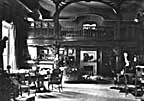 Maple Room
Maple Room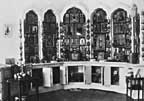 Aleksey's Bedroom
Aleksey's Bedroom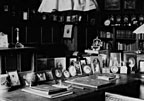 Nicholas's Study
Nicholas's Study Aleksey's Playroom
Aleksey's Playroom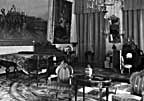 Formal Reception
Formal Reception Balcony View
Balcony View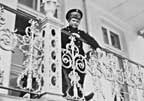 Aleksey- Balcony
Aleksey- Balcony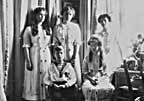 Children-Mauve
Children-Mauve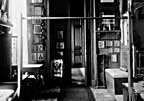 Nicholas's Bathroom
Nicholas's Bathroom Alexandra- Mauve
Alexandra- Mauve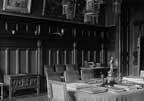 Nicholas's Reception
Nicholas's Reception Tsarskoe Selo Map
Tsarskoe Selo Map